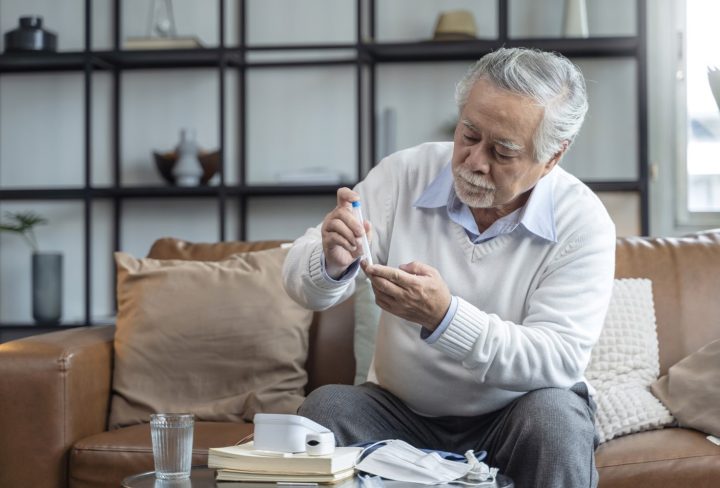Diabetes is a chronic condition that can have a significant impact on the quality of life of those affected by it. Over 422 million people globally have diabetes, which is the primary cause of blindness, kidney failure, and lower limb amputation. Type 2 diabetes can often be reversed (medically known as remission of diabetes) by adopting a healthy diet and increasing physical activity.
Research has shown that some people can make it reversible by making changes to their lifestyle.
These changes include losing weight, modifying diet, increasing physical activity, and alternative medicine. Fasting has also shown some promise in reversing type 2 diabetes. However, it’s important to note that while remission is possible, it is not a permanent cure.
First Step-Lifestyle Changes for Diabetes Reversal
The first step to reversal is to make lifestyle changes that promote healthy eating and regular physical activity.
- Eating a balanced diet rich in plenty of fruits, vegetables, and whole grains is important for maintaining blood sugar levels at optimum levels.
- Regular exercise, like walking or swimming, can also help to reduce insulin resistance and improve blood sugar control.
Can Losing Weight Reverse Type 2 Diabetes?
- Losing weight is the key to reversing type 2 diabetes.
- Aim for 800-1200 calories per day, with a focus on nutrient-dense, low-carbohydrate foods.
- Regular exercise can also improve insulin sensitivity and help maintain weight loss.
Speak to a doctor before making any major dietary or lifestyle changes.
Exercise to Help Reverse Type 2 Diabetes
- Physical activity combined with a modest, lower-calorie diet can help improve diabetes.
- Aim for 10,000 steps a day and at least 2 1/2 hours of moderate exercise a week, along with cutting 500-750 calories a day to reach near-normal blood sugar without medication.
Fasting & Type 2 Diabetes Reversal
- Therapeutic fasting involves going without food and drink with calories for a set amount of time.
- Following a diet program of three 24-hour fasts each week for several months has shown promising results.
- Eating low calories 2 days a week and a normal diet the other days also helped people with type 2 diabetes lose weight and lower their blood sugar levels.
It’s important to note that while these lifestyle changes can help reverse type 2 diabetes, there is no permanent cure for the disease. However, these changes can help manage diabetes and improve overall health.
Addressing Conditions that Increase Risk of Diabetes
Finally, it is important to address any underlying medical conditions that may be contributing to your diabetes. Conditions such as:
- Obesity
- High blood pressure
- High cholesterol
The above conditions can all increase your risk of developing diabetes and can make it more difficult to reverse the condition. Treating these conditions can help to reduce your risk of complications from diabetes and improve your overall health.
While it is possible to reverse the symptoms of diabetes through lifestyle changes such as exercise and a healthy diet, it is important to understand that diabetes reversal is not a cure. Diabetes reversal essentially means that a person has successfully managed to lower their blood sugar levels to a healthy range through lifestyle changes or medication. However, if the person were to go back to their old habits, their blood sugar levels could rise again, and they would be considered diabetic once more.
Acupuncture treatment for diabetes:
Initial Assessment: The acupuncturist will begin by conducting an initial assessment, which may involve a detailed interview and examination to understand the individual’s medical history, symptoms, and overall health.
Diagnosis and Treatment Plan: Based on the assessment, the acupuncturist will make a diagnosis according to Traditional Chinese Medicine (TCM) principles. This involves identifying imbalances in the body’s energy flow (known as Qi) and determining which acupuncture points may be targeted to address the specific issues related to diabetes.
Acupuncture Session: During the acupuncture session, the individual will lie down comfortably on a treatment table. The acupuncturist will use sterile, thin needles and insert them into specific acupuncture points on the body. These points are believed to correspond to energy pathways or meridians that can influence various aspects of health and well-being.
Needle Stimulation: After inserting the needles, the acupuncturist may gently manipulate or twirl the needles to stimulate the Qi and promote its flow throughout the body. This manipulation is typically painless and is meant to enhance the therapeutic effect of the treatment.
Duration of Treatment: The needles are usually left in place for about 15 to 30 minutes while the individual rests comfortably. During this time, some people experience a feeling of relaxation or mild sensations around the needle insertion sites.
Acupuncture is often not a one-time treatment. Depending on the individual’s condition and response to acupuncture, multiple sessions may be recommended over a period of time. The frequency and duration of treatment will be determined by the acupuncturist based on the individual’s progress and needs.
Monitoring HbA1c Levels
To ensure that diabetes remains under remission (reversal), it is essential to monitor blood sugar levels and HbA1c levels regularly.
This helps to ensure that blood sugar levels remain within a healthy range and that any necessary adjustments can be made to the treatment plan in a timely manner.
Therefore, it is important for individuals with diabetes to continue to make healthy lifestyle choices and to work closely with their healthcare team to monitor and manage their condition for their lifetime. With the right approach, you can take control of your health and reverse your diabetes.
“Diabetes is not a life sentence. With the right diet and lifestyle changes, it is possible to reverse diabetes and achieve a healthier, happier life.”

